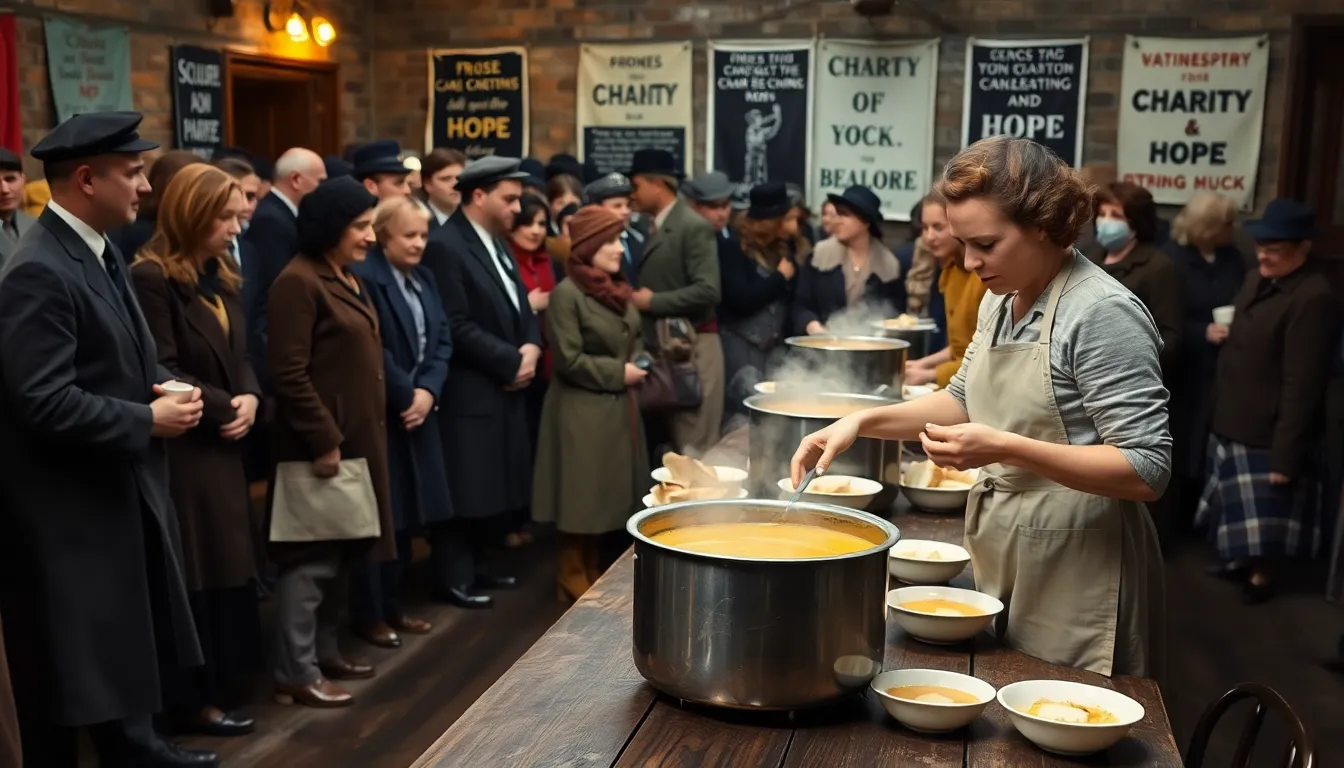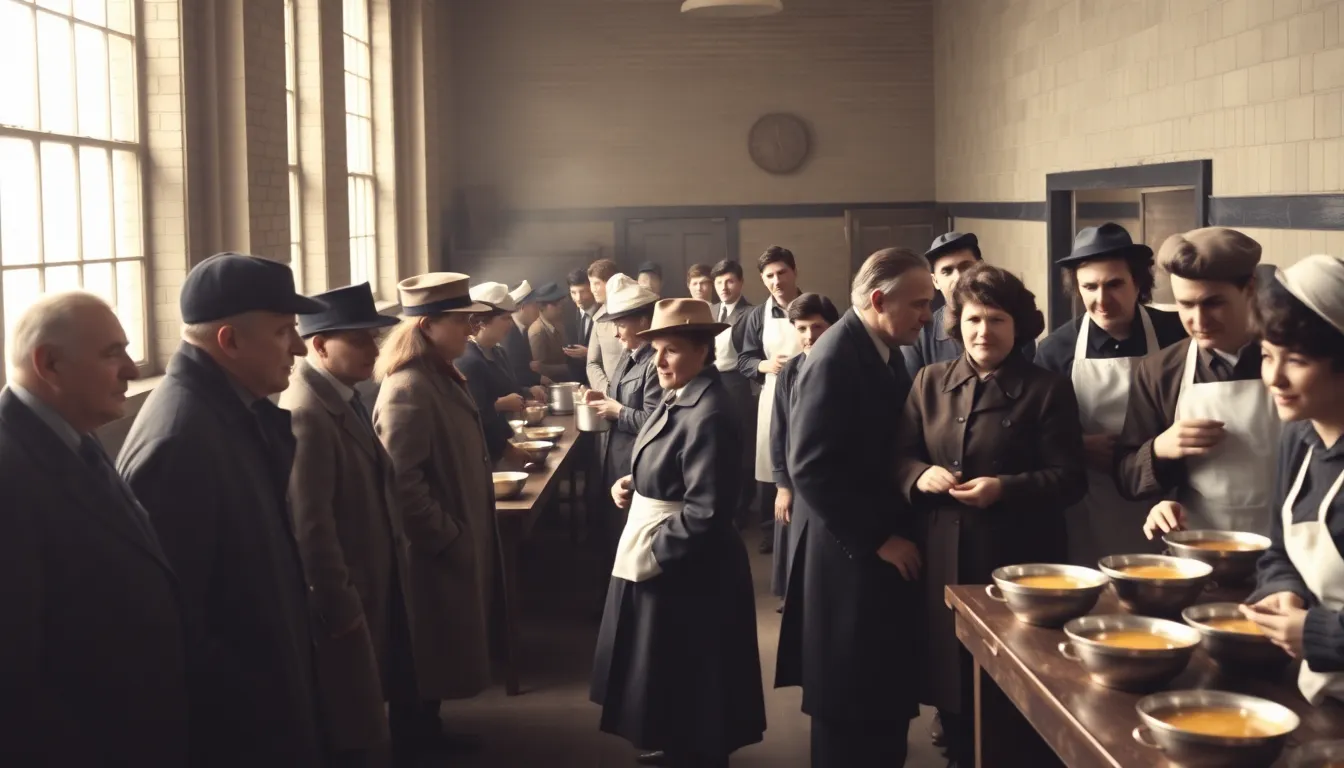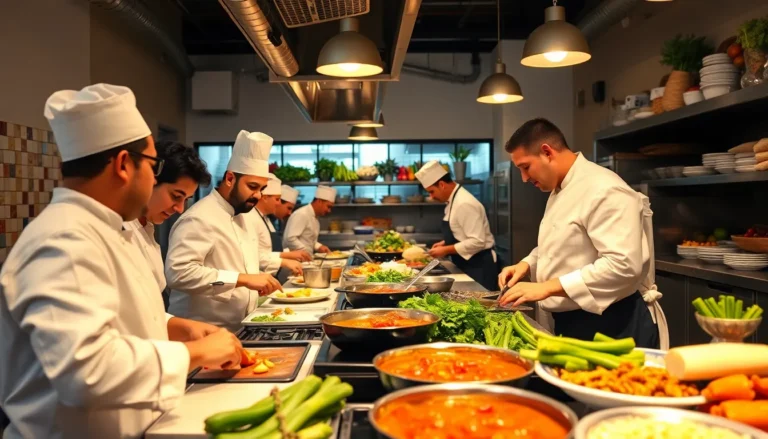Table of Contents
TogglePicture this: It’s the 1930s, and instead of gourmet meals, the culinary delight of the day is a warm bowl of soup. During the Great Depression, Americans faced astronomical unemployment and food scarcity, making soup kitchens not just necessary, but a lifeline. Ever wonder what drove people to stand in queue for a simple bowl, often sharing their lives with strangers? Grab a spoon, because this article is stirring up some rich history about soup kitchens that fed millions and anchored communities during the hardest of times.
The Origins Of Soup Kitchens

The concept of soup kitchens isn’t a modern invention. It can be traced back centuries, with roots in charity and mutual aid. But, their popularity surged during the Great Depression, a time when the American economy crumbled under the weight of stock market crashes and bank failures. By the early 1930s, people found themselves not only unemployed but also struggling to feed their families. In cities across America, organizations popped up to offer free meals, simple yet comforting bowls of soup, bread, and sometimes pastries. They provided nourishment that extended beyond just food: it offered a sense of dignity and community into lives that had been shattered.
Soup kitchens began to take shape in response to the growing need for food assistance. They were typically set up in churches, community centers, and even private homes. Volunteers, motivated by a sense of duty and compassion, served food to those who had fallen on hard times. These kitchens became beacons of hope, offering not just sustenance but also a place where individuals could connect with others facing similar struggles.
The Role Of Charitable Organizations
Charitable organizations played a crucial role in the establishment and operation of soup kitchens during the Great Depression. Groups like the Salvation Army, the Red Cross, and others leaped into action. They mobilized communities, raised funds, and coordinated the distribution of food in a time when resources were scarce.
Many of these organizations relied on the generosity of the public. Local businesses and citizens donated food, while volunteers offered their time and labor. Soup kitchens became a community effort, where everyone played a part, be it cooking, serving, or cleaning up after meals. The spirit of helping one another thrived, showcasing the resilience of the human spirit amidst adversity.
Government Involvement In Providing Food Aid
As the need intensified, government involvement became a focal point in the fight against hunger. In 1933, President Franklin D. Roosevelt launched the Federal Emergency Relief Administration (FERA) to provide direct relief to the unemployed. Under this initiative, soup kitchens received both funding and support.
The government not only supplied financial assistance but also provided food shipments to these kitchens. Programs evolved, and eventually, the Works Progress Administration (WPA) opened more soup kitchens, aiming to employ workers while feeding those in need. This combination of charity and government aid significantly increased the number of kitchens available, cementing their role in the social fabric during this challenging era.
Impact Of Soup Kitchens On Communities
Soup kitchens had a profound impact on the communities they served. They became gathering spots, where individuals not only found meals but also camaraderie and support. Many people formed friendships over shared ladles of soup, building connections that helped strengthen social ties within their neighborhoods.
Also, these kitchens took on a larger role. They often served as hubs for information on job opportunities, housing assistance, and other social services. Community members would share advice and resources, helping one another navigate the hardships of the Great Depression. The act of gathering for a meal transformed from mere survival into a movement of solidarity, showcasing the power of community support in times of crisis.
Personal Stories And Experiences
Diving into personal stories provides a vivid picture of what it meant to rely on soup kitchens during the Great Depression. Take the story of Mrs. Eleanor Hughes, a mother of three who lost her husband to illness just before the economic collapse. Facing hunger, she began lining up outside the local soup kitchen, not just for herself, but for her children too.
Eleanor recalled the first meal she received, a simple bowl of tomato soup and a piece of bread. To her, it was more than just food: it was a sign that her family wasn’t alone in their struggle. She noted how the people serving the soup treated her and her children with kindness and respect, even when the world outside felt harsh and unforgiving.
Stories like Eleanor’s reflect the resilience and determination that defined many lives during this era, illustrating how soup kitchens weren’t just places for nourishment but also for healing and hope.
The Legacy Of Soup Kitchens After The Depression
Even after the Great Depression ended, the legacy of soup kitchens continued. Many of the charitable organizations that had emerged remained active in community aid efforts. They pivoted from emergency food relief to ongoing support initiatives, laying the groundwork for future welfare programs.
Post-Depression America saw the institutionalization of food assistance programs, with soup kitchens becoming a permanent fixture in many cities. Their legacy lives on today, reminding us of the vital importance of community support and the spirit of giving. These establishments also sparked conversations about food security and the responsibility society holds in caring for its most vulnerable.








